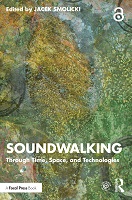Chapter 10 ‘Our voices reached the sky’
Proposal review
sonic memories of the Armenian Genocide
| dc.contributor.author | Ouzounian, Gascia | |
| dc.date.accessioned | 2023-01-27T13:44:38Z | |
| dc.date.available | 2023-01-27T13:44:38Z | |
| dc.date.issued | 2023 | |
| dc.identifier.uri | https://library.oapen.org/handle/20.500.12657/60925 | |
| dc.description.abstract | Chapter 10: This chapter examines sonic memories of the Armenian Genocide, drawing on survivors’ earwitness testimonies (testimonies describing auditory and sonic experiences of the Genocide). While visual evidence predominates in studies of genocide, this chapter makes the claim that sonic memory—as a site of historical, cultural, and affective knowledge, and as a type of memory that can be individually and collectively formed—can deepen our understanding of the historical aspects of genocide, as well as the social, psychological, and emotional dimensions of genocide. In relation to contested histories, attending to sonic memories can also be a form of ‘counterlistening’: listening against official narratives of genocide and, in the case of the Armenian Genocide, against the narrative of genocide denial that continues to be maintained by the Turkish state. This chapter suggests that the voices of Armenian Genocide victims—concealed and denied for over a century by Turkey—can nevertheless be excavated and listened to via the sonic memories of genocide survivors. In engaging with sonic memories, it draws on oral testimonies collected by Verjiné Svazlian, an Armenian ethnographer who walked from village to village in Soviet Armenia for a period of decades, collecting, recording, and transcribing some 700 survivors’ testimonies when it was not safe to do so. It contends with Svazlian’s original acts of counterlistening and ‘soundwalking’ and how they make possible a more shared or public form of listening today. More broadly, this chapter considers how sound and listening formed a part of the injuries as well as the violent tactics of the Armenian Genocide; and asks how listening to genocide can reshape our understanding of genocide and its effects. | en_US |
| dc.language | English | en_US |
| dc.subject.classification | thema EDItEUR::A The Arts::AV Music::AVX Music recording and reproduction | en_US |
| dc.subject.classification | thema EDItEUR::S Sports and Active outdoor recreation::SZ Active outdoor pursuits::SZC Walking, hiking, trekking | en_US |
| dc.subject.classification | thema EDItEUR::T Technology, Engineering, Agriculture, Industrial processes::TT Other technologies and applied sciences::TTA Acoustic and sound engineering | en_US |
| dc.subject.other | Jacek; Smolicki; Soundwalking; Space; Technologies; Through; Time | en_US |
| dc.title | Chapter 10 ‘Our voices reached the sky’ | en_US |
| dc.title.alternative | sonic memories of the Armenian Genocide | en_US |
| dc.type | chapter | |
| oapen.identifier.doi | 10.4324/9781003193135-11 | en_US |
| oapen.relation.isPublishedBy | 7b3c7b10-5b1e-40b3-860e-c6dd5197f0bb | en_US |
| oapen.relation.isPartOfBook | 7a21618b-5129-45c1-9d8f-8efe16b811a1 | en_US |
| oapen.relation.isFundedBy | 4a1ea0f2-e46e-4025-bbc3-e853f4181d49 | en_US |
| oapen.relation.isbn | 9781032044248 | en_US |
| oapen.relation.isbn | 9781032044224 | en_US |
| oapen.collection | European Research Council (ERC) | en_US |
| oapen.imprint | Routledge | en_US |
| oapen.pages | 18 | en_US |
| oapen.grant.number | 865032 | |
| oapen.grant.project | SONCITIES | |
| peerreview.anonymity | Single-anonymised | |
| peerreview.id | bc80075c-96cc-4740-a9f3-a234bc2598f1 | |
| peerreview.open.review | No | |
| peerreview.publish.responsibility | Publisher | |
| peerreview.review.stage | Pre-publication | |
| peerreview.review.type | Proposal | |
| peerreview.reviewer.type | Internal editor | |
| peerreview.reviewer.type | External peer reviewer | |
| peerreview.title | Proposal review | |
| oapen.review.comments | Taylor & Francis open access titles are reviewed as a minimum at proposal stage by at least two external peer reviewers and an internal editor (additional reviews may be sought and additional content reviewed as required). |

